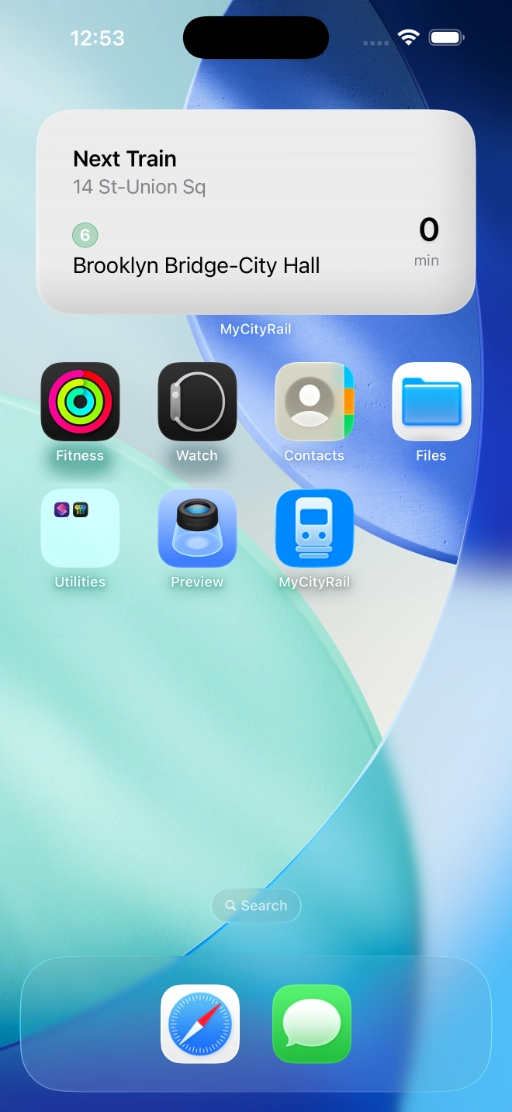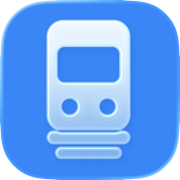How iOS Widgets Change Your Daily Commute: From App to Glance
iOS widgets transform how you interact with train times—from a multi-step app process to instant information at a glance. Here's how this changes the commuter experience.
Checking train times used to require opening an app, waiting for it to load, navigating to your station, and hoping the data was current. iOS widgets change this fundamental interaction—turning a deliberate action into a passive glance.
This isn't just a convenience improvement; it's a paradigm shift that aligns digital tools with how commuters actually behave.
The Old Way vs. The Widget Way
Traditional App Workflow:
Widget Workflow:
The difference is dramatic: 7 steps reduced to 3, with the most time-consuming steps eliminated entirely.
The Psychology of Ambient Information
Widgets tap into something fundamental about how we process information. Instead of requiring focused attention, they provide ambient awareness—information that exists in your peripheral vision until you need it.
This mirrors how we naturally gather environmental information:
- Glancing at a clock to check the time
- Noticing weather conditions through a window
- Scanning a departure board while walking through a station
Widgets bring this natural behavior to digital information, making train times feel less like "using an app" and more like checking the time.
Real Commuter Scenarios
Scenario 1: The Morning Routine
Without widgets: You're getting ready for work, phone on the counter. Every few minutes you stop what you're doing, unlock your phone, open the transit app, check times, then return to your routine. This interruption happens 3-4 times as you monitor whether you need to leave yet.
With widgets: Your phone sits on the counter displaying live departure times. You monitor the situation peripherally while brushing teeth, making coffee, or getting dressed. When the next train is 8 minutes away, you naturally grab your things and head out.
Scenario 2: The Evening Commute Decision
Without widgets: You're finishing up work, debating whether to leave now or in 15 minutes. You pull out your phone, navigate through apps to check train times, see that the next train is in 3 minutes (too late) and the one after is in 18 minutes. You calculate that leaving in 15 minutes would work perfectly.
With widgets: You glance at your phone during the day and subconsciously register the train schedule. When 5:45 PM approaches, you already know intuitively that leaving at 5:50 PM will get you to the 6:08 PM train comfortably.
The Cognitive Load Difference
Traditional apps require you to actively remember to check train times and then interrupt your current task to do so. Widgets reduce this cognitive overhead by making the information always available without active effort.
Widget Placement Strategies
Where you place transit widgets significantly affects their usefulness:
Home Screen Widgets
- Top of the screen: Maximum visibility, perfect for frequent glances
- Today View (swipe right): Good for information that changes throughout the day
- Widget stacks: Smart rotation based on time of day
Lock Screen Widgets (iOS 16+)
- Above the time: Next departure always visible
- Below the time: More detailed information when needed
- Always-on display: Continuous ambient awareness
The Timing Intelligence Factor
Smart widgets don't just show information—they show the right information at the right time:
- Morning focus: Departures from your home station
- Evening focus: Departures from your work station
- Weekend mode: Different stations for leisure travel
- Alert integration: Service disruptions when they affect your routes
This contextual intelligence means you're not just getting train times—you're getting your train times when you need them.
The Reliability Factor
For widgets to change commuter behavior, they must be absolutely reliable:
- Fresh data: Information updates automatically without user intervention
- Offline graceful degradation: Shows last known times with clear timestamps
- Error handling: Clear indication when data is unavailable
- Performance: Instant display without loading states
A widget that's occasionally wrong or slow is worse than no widget at all—it undermines trust in the entire system.
Beyond Basic Train Times
Advanced widgets can surface more sophisticated information:
- Service alerts: Disruptions affecting your usual routes
- Platform changes: When your regular train moves to a different platform
- Crowd information: When available from transit authorities
- Alternative routes: When your primary route has issues
The Social Aspect
Widgets also change how we share transit information:
- Shared awareness: Family members can glance at each other's screens
- Coordination: Easier to time departures with travel companions
- Hospitality: Guests can see local transit options without asking

Train times at a glance: widgets transform your commute workflow
Experience Widget-Enhanced Commuting
Transform your daily transit routine with iOS widgets that put live train times at your fingertips.

7-day free trial • No ads • Privacy-focused
The Subtle Behavioral Shift
The real power of transit widgets isn't in any single interaction—it's in how they subtly reshape your relationship with public transport:
- Reduced anxiety: Less uncertainty about departure times
- Better planning: Natural awareness enables spontaneous optimization
- Increased usage: Lower friction makes transit more appealing
- Improved punctuality: Constant awareness reduces missed trains
Looking Forward: Widget Evolution
Transit widgets will likely evolve to include:
- Interactive elements: Quick actions without opening the full app
- Smart notifications: Proactive alerts about optimal departure times
- Integration with other apps: Calendar awareness for meeting locations
- Predictive information: Suggesting earlier departures based on historical delays
The Bigger Picture
iOS widgets represent a broader shift toward ambient computing—technology that provides value without demanding attention. For transit apps, this alignment with natural human behavior makes the difference between a tool you use and information that's simply available.
The best widgets disappear into your routine, surfacing critical information exactly when you need it without any conscious effort on your part. That's not just good design—it's how technology should work.
 MyCityRail
MyCityRail